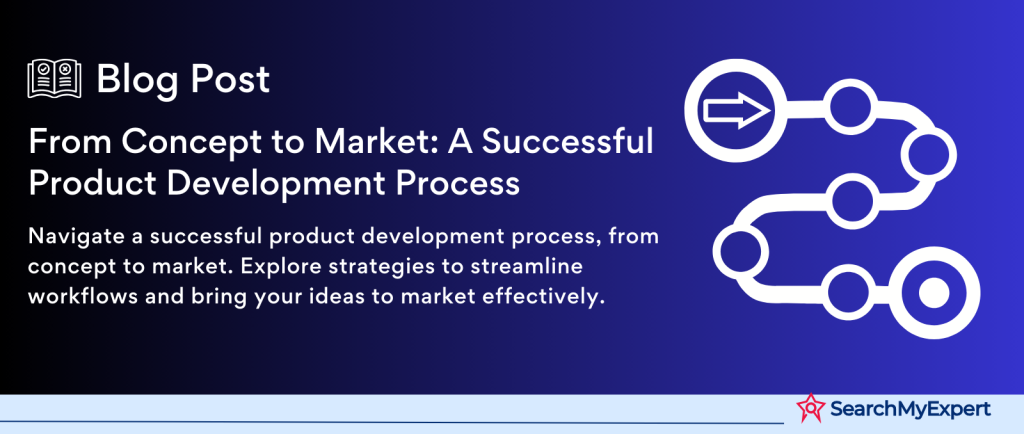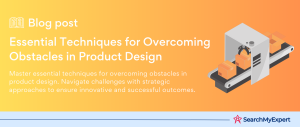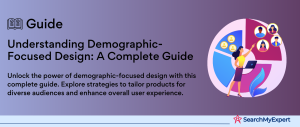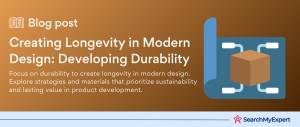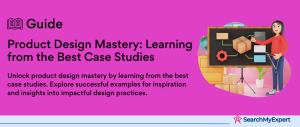The Product Design Process
Identifying the Problem: The Foundation of Product Development
Developing a successful product begins with a clear understanding of the problem it aims to solve. This crucial step involves delving into the core issues that your potential customers face. To effectively define the problem, consider the following aspects:
- Pain Points Identification:
Start by identifying common challenges and pain points in your target market. This could include inefficiencies, unmet needs, or gaps in existing solutions. - Consumer Needs Analysis: Understanding what your customers truly need is vital. This goes beyond surface-level wants and digs into the core requirements that your product must fulfill.
- Feedback and Insights Gathering: Engage with potential customers through surveys, interviews, or focus groups to gain deeper insights into their problems and expectations.
Analyzing Your Target Market: Who Are Your Customers?
Knowing who will use your product is as important as understanding the problem. A thorough analysis of your target market includes:
- Demographic Analysis:
Break down your market by age, gender, income level, education, and other demographic factors. This helps in tailoring your product and marketing efforts. - Psychographic Understanding:
Go beyond demographics to understand the lifestyle, values, attitudes, and interests of your potential customers. - Behavioral Insights: Analyze the buying behavior of your target market, including their purchasing habits, brand loyalty, and factors influencing their buying decisions.
Conducting Market Research and Competitive Analysis
Gaining a comprehensive view of the market landscape is crucial for positioning your product effectively. This involves:
- Industry Trends and Dynamics:
Stay informed about the latest trends, technological advancements, and regulatory changes in your industry. - Competitive Analysis:
Examine your competitors’ strengths and weaknesses. Understand their strategies, market positioning, and customer feedback. - Opportunity Identification:
Look for unexplored niches or areas where competitors are underperforming. This can reveal opportunities for your product to fill a gap in the market.
Brainstorming and Ideating
Generating Creative Solutions: The Heart of Innovation
Once you’ve defined the problem and understood your target audience, the next crucial step is brainstorming creative solutions. This stage is all about generating a wide range of ideas, no matter how unconventional they may seem. Here’s how to effectively approach this process:
- Encouraging Divergent Thinking:
Promote an environment where all ideas are welcomed and valued. Divergent thinking opens up possibilities beyond conventional solutions. - Idea Generation Techniques: Utilize methods like mind mapping, SCAMPER (Substitute, Combine, Adapt, Modify, Put to another use, Eliminate, Reverse), and brainstorming sessions to encourage creativity.
- Collaborative Ideation: Involve a diverse team in the brainstorming process. Different perspectives can lead to more innovative solutions.
- Documenting Ideas:
Keep a record of all ideas generated, no matter how outlandish they may seem at first. Often, great ideas are born from the combination of several initial thoughts.
Encouraging a Culture of Open Thinking
Creating a culture that nurtures open thinking and experimentation is essential for successful ideation. Here’s how to cultivate such an environment:
- Fostering Psychological Safety: Ensure that team members feel safe to express their ideas without fear of criticism or ridicule.
- Embracing Failure as a Learning Tool: Encourage a mindset where failure is seen as a stepping stone to success. This approach fosters a risk-taking attitude that is crucial for innovation.
- Regular Ideation Sessions:
Schedule regular meetings dedicated solely to generating and discussing new ideas. This keeps the creative juices flowing within the team. - Rewarding Creativity:
Recognize and reward creative contributions, even if they don’t lead to a final product. This encourages ongoing innovation and idea generation.
Sketching, Prototyping, and Refining Potential Solutions
Turning ideas into tangible solutions involves a process of sketching, prototyping, and refinement. Each step is crucial:
- Sketching Ideas:
Begin by sketching out ideas. These sketches should be quick and rough, aimed at visually capturing the concept. - Creating Prototypes: Develop prototypes of your product. These can range from simple models made from basic materials to more sophisticated digital prototypes.
- Feedback and Iteration:
Test your prototypes with potential users. Gather feedback and use it to refine your product. Iteration is key – the prototype is rarely the final version. - Refining the Solution:
Based on feedback, refine your solution. This may involve altering the design, and functionality, or even rethinking aspects of the product entirely.
User Research and Validation
Testing Ideas with Actual Users
After brainstorming and prototyping potential solutions, the next critical step is to validate these ideas with actual users. This phase is all about gathering user feedback to ensure your product meets the needs and expectations of your target audience. Here’s how to approach user research and validation:
- Conducting Surveys:
Create surveys with specific, targeted questions to gather quantitative data. Surveys are efficient for reaching a large audience and can provide valuable insights about user preferences and needs. - In-Depth Interviews:
Conduct interviews to dive deeper into the user experience. These one-on-one sessions allow for a thorough understanding of user pain points, preferences, and behaviors. - Usability Testing:
Observe users interacting with your product. This can be done through in-person sessions or remotely. Usability testing helps identify any issues in the user interface and overall user experience.
Gathering and Analyzing Feedback
The feedback collected from user research is a goldmine of information and should be carefully analyzed to identify key insights. Here’s what to focus on:
- Identifying Common Themes:
Look for patterns in the feedback. Common issues or suggestions that appear across multiple users are likely areas that need attention. - Quantitative vs. Qualitative Data:
Balance the insights from quantitative data (like survey results) with qualitative insights (like interview transcripts) for a comprehensive understanding. - Prioritizing Feedback: Not all feedback will be equally important. Prioritize based on the impact on the user experience and the feasibility of implementing changes.
Iterating Based on User Insights
The final step in this phase is iterating on your design based on the user insights gathered. This involves:
- Rapid Prototyping:
Quickly update your prototypes to incorporate feedback. This doesn’t mean starting from scratch but refining and tweaking existing designs. - Testing Iterations: Validate each iteration by going back to users for more feedback. This iterative process helps in fine-tuning the product to better meet user needs.
- Documenting Changes and Rationale:
Keep a record of the changes made and the reasons behind them. This documentation will be valuable for future reference and for understanding the evolution of your product.
Design Development and Refinement
Developing Detailed Specifications and Technical Drawings
The transition from a conceptual prototype to a market-ready product requires the development of detailed specifications and technical drawings. This step is crucial for ensuring that your design is feasible, manufacturable, and meets all necessary standards. Here’s how to approach this phase:
- Creating Technical Drawings:
Develop detailed drawings of your product, including dimensions, materials, and assembly instructions. These drawings are essential for manufacturers to accurately produce their products. - Material and Component Specification: Specify the materials and components required for your product. Consider factors like durability, cost, availability, and environmental impact.
- Compliance and Standards:
Ensure your product design complies with relevant industry standards and regulations. This might include safety standards, environmental regulations, or quality benchmarks.
Creating High-Fidelity Prototypes and Mockups
High-fidelity prototypes are advanced versions of your product that closely resemble the final product in terms of design, functionality, and user experience. Here’s how to create effective high-fidelity prototypes:
- Advanced Prototyping Techniques: Use techniques such as 3D printing, CNC machining, or advanced software tools to create high-fidelity prototypes. These prototypes should be as close as possible to the final product.
- User Experience Testing:
Conduct thorough testing of these prototypes to assess the user experience. Focus on usability, ergonomics, and the overall look and feel of the product. - Refinement Based on Testing:
Use the feedback from this testing phase to refine your prototypes. This might involve tweaking the design, adjusting materials, or improving functionality.
Ensuring Alignment with Brand Identity and User Needs
The final design must not only be functional and manufacturable but also align with your brand identity and the needs of your users. Here’s how to ensure this alignment:
- Brand Consistency: Ensure that your product design reflects your brand’s values, aesthetics, and messaging. This consistency is key to building brand recognition and loyalty.
- User-Centric Design:
Continuously refer back to your user research to ensure that the design meets the needs and expectations of your target audience. - Aesthetic and Functional Balance: Strike a balance between aesthetic appeal and functionality. While a product needs to be visually attractive, its primary function should not be compromised.
Prototyping and Testing
Building Functional Prototypes
Functional prototyping is a pivotal step in product development, bringing you closer to a market-ready product. It involves creating prototypes that not only look like the final product but also function like it. Here’s how to effectively build and utilize functional prototypes:
- Creating Realistic Models: Use materials and processes that closely mimic the final production method to build your prototypes. This ensures that the prototypes accurately represent how the product will look and function.
- Incorporating Electronics and Software:
If your product includes electronic components or software, integrate these into your prototypes. This allows for testing the full range of functionalities. - Prototype Diversity: Create multiple versions of your prototype if necessary, each focusing on different aspects of the product (e.g., durability, usability, aesthetics).
Conducting Rigorous Usability Testing
Usability testing at this stage becomes more intensive and focuses on the finer details of how users interact with your product. Here’s how to approach this testing:
- Real-World Testing Scenarios: Test the prototypes in environments and situations that mimic how the product will be used in real life. This provides insights into how the product performs under typical usage conditions.
- User Feedback and Observations: Gather detailed feedback from users during testing. Pay attention to how they interact with the product, noting any difficulties or points of confusion.
- Addressing Usability Issues: Use the feedback to identify and address usability issues. This might involve redesigning certain aspects, simplifying the user interface, or enhancing certain features.
Ensuring Feasibility and Quality Standards
The final aspect of this phase is to ensure that your product is not only desirable and usable but also feasible for manufacturing and meets all quality standards. Here’s how to ensure these factors:
- Manufacturability Analysis: Work with manufacturers to assess whether your design can be economically and effectively produced at scale. This may involve adjusting materials, design, or production methods.
- Quality Assurance:
Implement quality assurance processes to ensure that your product meets the required standards. This includes testing for durability, reliability, and safety. - Iterative Refinement:
Based on feedback from manufacturability assessments and quality tests, make necessary refinements to your design. This iterative process ensures that the final product is not only user-friendly but also practical to produce and of high quality.
Launch and Post-Launch Evaluation
Developing a Launch Strategy and Marketing Plan
The launch of your product marks a significant milestone, and it requires a well-thought-out strategy and marketing plan. Here’s how to approach this critical phase:
- Defining Your Launch Goals:
Establish clear objectives for your product launch, such as market penetration rates, sales targets, and brand awareness levels. - Target Audience Refinement: Revisit your target audience analysis to tailor your marketing messages and channels appropriately.
- Creating a Marketing Mix: Develop a comprehensive marketing plan that includes product positioning, pricing strategy, promotion channels, and distribution methods.
- Building Anticipation:
Use teasers, sneak peeks, and pre-launch offers to build excitement and anticipation among your target audience. - Collaborations and Partnerships:
Consider partnerships or collaborations with influencers, industry experts, or complementary brands to amplify your reach.
Monitoring Product Performance and User Feedback Post-Launch
Once your product hits the market, it’s crucial to closely monitor its performance and gather user feedback. This involves:
- Sales and Performance Tracking: Analyze sales data, market penetration, and other key performance indicators (KPIs) to assess how well your product is performing against your launch goals.
- Continued User Feedback Collection:
Gather ongoing feedback from users through surveys, reviews, and social media. Pay attention to what customers are saying about your product, including praises and complaints. - Social Media and Online Monitoring: Keep an eye on social media, forums, and online communities to gauge public perception and gather unfiltered user opinions.
Iterating Based on Post-Launch Feedback
The post-launch phase is an opportunity for continuous improvement. Use the data and feedback collected to iterate on your product. Here’s how:
- Identifying Areas for Improvement:
Analyze feedback to pinpoint areas where your product could be improved, whether in terms of features, user experience, or other aspects. - Implementing Changes: Depending on the feedback, consider making changes to your product. This could range from minor tweaks to significant overhauls.
- Testing and Validating Changes:
Before rolling out any changes broadly, test them with a segment of your target market to ensure they address the issues effectively. - Ongoing Innovation:
Keep the cycle of feedback and iteration ongoing. Continuous innovation is key to staying relevant and competitive in the market.
Continuous Improvement and Maintenance
Establishing a Process for Ongoing Product Improvement
In the dynamic landscape of product development, continuous improvement is key to maintaining relevance and customer satisfaction. Here’s how to establish an effective ongoing improvement process:
- Creating a Feedback Loop:
Implement a systematic approach to gather continuous feedback from users, retailers, and stakeholders. This could involve regular surveys, feedback forms on your website, or engaging with users on social media. - Dedicated Team for Improvement:
Assign a team or individual to focus on continuous product improvement. This team should analyze feedback, monitor product performance, and propose enhancements. - Setting Improvement Milestones:
Establish regular intervals for reviewing product performance and implementing improvements. This could be quarterly, bi-annually, or annually, depending on the nature of your product.
Promptly Addressing Bugs and User Complaints
A swift response to user complaints and technical issues is crucial for maintaining trust and satisfaction. Here’s how to effectively manage these concerns:
- Efficient Issue Tracking System:
Implement a system for tracking and categorizing issues and complaints. This could be a ticketing system or a customer relationship management (CRM) tool. - Rapid Response Mechanism:
Develop a protocol for quickly responding to and resolving issues. This includes acknowledging the problem, investigating it, and communicating with the user throughout the resolution process. - Feedback to Development Team:
Ensure there is a clear channel for communicating user feedback and technical issues to the development and design teams for necessary adjustments or bug fixes.
Staying Updated on Trends and Adapting to Market Needs
The market is always evolving, and so should your product. To stay competitive and relevant, it’s important to adapt to changing market needs and trends:
- Market and Industry Research:
Regularly research market trends, emerging technologies, and competitor activities. Attend industry events, subscribe to relevant publications, and engage with thought leaders in your field. - Incorporating New Features and Technologies:
Based on your research, consider incorporating new features, technologies, or design elements into your product to enhance its appeal and functionality. - Sustainability and Adaptation:
With growing concerns around sustainability, evaluate how your product and processes can be more environmentally friendly. This not only benefits the planet but also aligns with the values of many modern consumers.
Conclusion:
In conclusion, successful product development is a comprehensive process that requires meticulous planning, creativity, user-centric design, and continuous improvement. By following these seven crucial steps – defining the problem and audience, brainstorming and ideation, user research and validation, design development and refinement, prototyping and testing, launch and post-launch evaluation, and ongoing improvement and maintenance – businesses can effectively navigate the complexities of bringing a new product to market. Remember, the key to a successful product lies in understanding your audience, embracing innovation, and being adaptable to the ever-changing market dynamics. With this guide, you’re well-equipped to transform your product idea into a thriving market reality, ensuring it not only meets but exceeds user expectations and stands the test of time in a competitive marketplace.
Create standout products with our Product Design Company.
Table of Contents
Toggle
